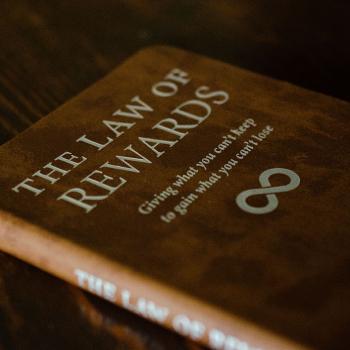That which is Real is beyond all names and all conceptions of personality and impersonality. The attempt to give That-Which-Is any name at all reflects the inadequacy of all terms and definitions. If we use the word "God," while the implication seems personal, it refers to the basis of all that exists, and is the goal of all. The "personality" of the Godhead is nothing more than a metaphor and a symbol, and if we ignore its symbolic nature we miss the truth.
Though religions themselves seem divisive, the opposite is the case for religious mystics. No matter what religious tradition the mystic comes from, he or she speaks not of division, but of unity. Such spiritual giants have unshakable faith in the supremacy of Spirit, together with invincible optimism, ethical universalism, and religious toleration.
Cultural and religious influences, however, are not the only reason some mystics use metaphorical, dualistic language. The case of Marguerite Porete is but one example of how dangerous it is to be a mystic within dualistic religious traditions. For this reason, mystics within Jewish, Christian, and Islamic traditions have sometimes found it necessary to use coded language to describe their experiences. In theory, this (dualistic) coded language serves as protection against heresy hunters. But using the metaphor of the lover and the Beloved to describe one's relationship to the All doesn't always work.
The Sufi Muslim mystic Abu Yazid, who died in 875 C.E., was able to get away with writing about the extinction of the empirical self as the mystic melts into God. He further dared to write that one achieves this union with God, not necessarily by prostrating oneself and praying to Allah, but by self-control—ascetic and contemplative practices which ultimately lead to a state wherein all consciousness of one's own individuality as separate from God is lost. Less than a century later, however, another great Sufi mystic, Al Hallaj, was both crucified and beheaded for daring to proclaim his identity with Allah.
The Lover and the Beloved
The metaphor of the Lover-Beloved parallels the Hindu concept of Atman-Brahman. Atman, or Self—the localized divinity within—is Brahman, or God. When the "Lover" (the individuated divine Self) melts into the Beloved, only the Beloved remains. Once Atman is fully recognized as identical to Brahman, only Brahman remains. Duality, for mystics, is an illusion.
Christian and Sufi mystics use "God language" because they are comfortable with it, and while Hindus refer to Brahman as "God," Brahman is not a deity in any true sense of the word. Brahman is the wholly impersonal Absolute. Christian and Sufi mystics use the term "God" in the same way.
While the Christian or Sufi mystic's ultimate goal is no different from that of a Buddhist or Hindu, there are differences between their metaphors, emphasis, philosophy, and practice. The writings of Christian and Sufi mystics—and in many cases, Hindus as well—are often ecstatic in nature. The human traits of passion and emotion are common to Christian, Sufi, Jewish, and Hindu mystical literature, whereas they seem less present in Taoism and Buddhism.
There are several reasons for these differences, and they are all essentially philosophical. Hindus may "worship" different gods like Shiva or Vishnu or Ishvara, but their expression of devotion is not really polytheistic. The Godhead of Brahman describes Brahman's function: Brahma represents the Creator of life, Vishnu the Sustainer, and Shiva the Destroyer.
Tibetan Buddhism may be similarly misunderstood given its devotion to a pantheon of deities. This may seem paradoxical since Buddhists do not believe in a theistic God.
But when mystic ecstasy and the personified metaphor of "God" or the "Beloved" is missing, spiritual poetry is often missing as well. Hymns and prayers to the Beloved seem to be highly emotional. Buddhism discourages emotions in favor of achieving equanimity of mind, so it has no foundation for ecstatic poetry. Likewise, Buddhism rejects the metaphor of the Beloved—believing (falsely, in my opinion) it to be a theistic term.
Chan Buddhists of China and Zen Buddhists of Japan, on the other hand, are masters of haiku-like, intentionally cryptic, poetry written in such a way as to force the reader to use the intuitive, not the discursive, mind. Since ancient Chinese Taoism had a major influence on Buddhism when it first came to China, there are parallels between Taoist and Zen poetry.
Buddhists also refer to the Absolute as the "Void" or Sunyata. By definition, Buddhism is—at least metaphorically—nihilistic, and nihilism is hardly an incubator for poetry. Still, Chan and Zen Buddhist literature is often poetic. Consider the words of the Third Chinese patriarch of Zen:
The Great Way (Tao) is not difficult for those who have no preferences. When love and hate are both absent, everything becomes clear and undisguised. Make the slightest distinction, however, and heaven and earth are set infinitely apart.




